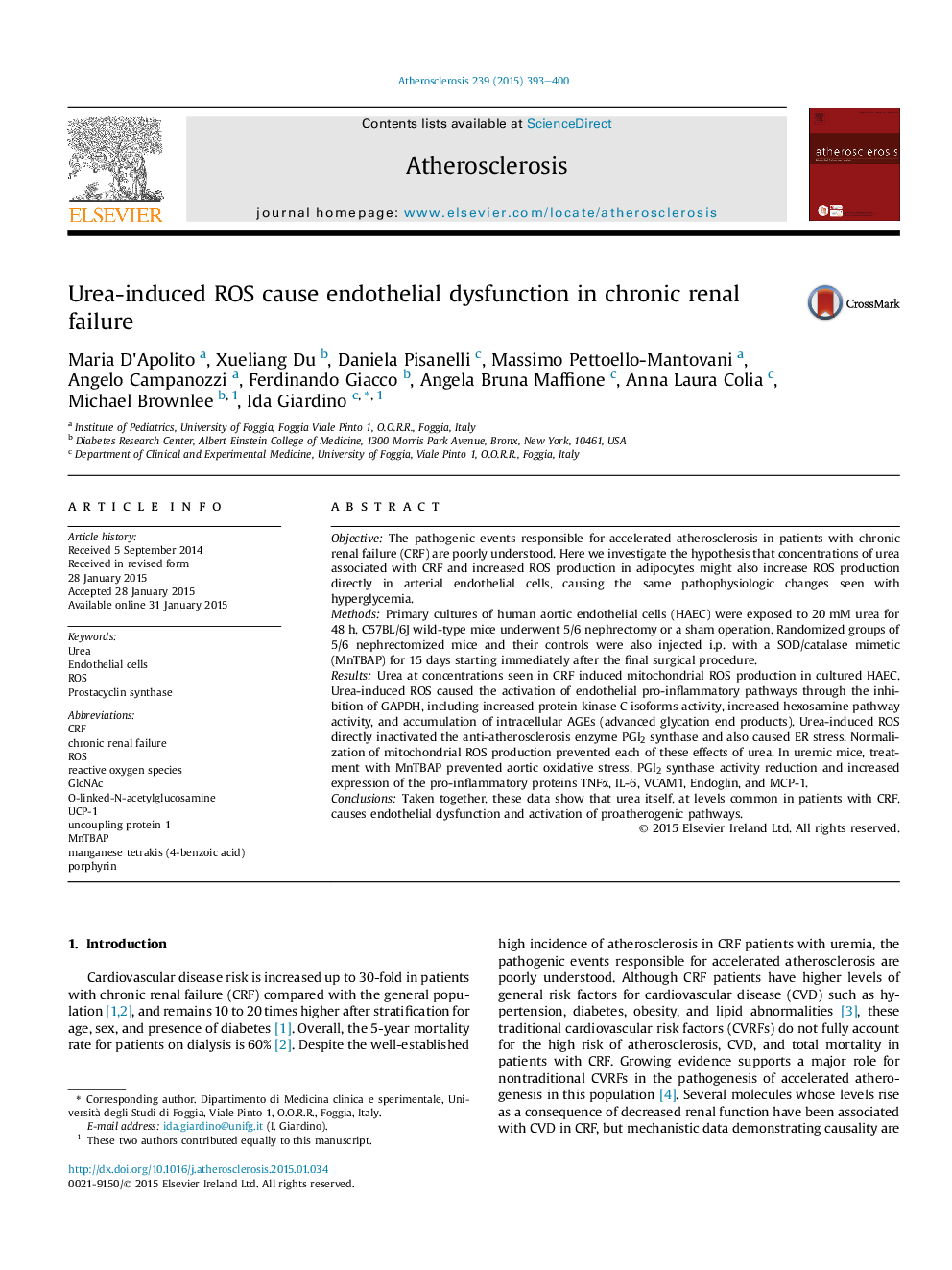| کد مقاله | کد نشریه | سال انتشار | مقاله انگلیسی | نسخه تمام متن |
|---|---|---|---|---|
| 5944696 | 1172345 | 2015 | 8 صفحه PDF | دانلود رایگان |

- Urea, considered to be non-toxic in CRF patients, increases mitochondrial ROS production in arterial endothelial cells.
- The Urea-induced ROS activate pro-atherosclerotic pathways through GAPDH inhibition.
- The Urea-induced ROS directly inactivate PGI2 synthase, a critical endothelial-specific antiatherosclerotic enzyme.
- Treatment with an SOD/catalase mimetic normalizes PGI2 synthase activity in mice with CRF.
ObjectiveThe pathogenic events responsible for accelerated atherosclerosis in patients with chronic renal failure (CRF) are poorly understood. Here we investigate the hypothesis that concentrations of urea associated with CRF and increased ROS production in adipocytes might also increase ROS production directly in arterial endothelial cells, causing the same pathophysiologic changes seen with hyperglycemia.MethodsPrimary cultures of human aortic endothelial cells (HAEC) were exposed to 20 mM urea for 48 h. C57BL/6J wild-type mice underwent 5/6 nephrectomy or a sham operation. Randomized groups of 5/6 nephrectomized mice and their controls were also injected i.p. with a SOD/catalase mimetic (MnTBAP) for 15 days starting immediately after the final surgical procedure.ResultsUrea at concentrations seen in CRF induced mitochondrial ROS production in cultured HAEC. Urea-induced ROS caused the activation of endothelial pro-inflammatory pathways through the inhibition of GAPDH, including increased protein kinase C isoforms activity, increased hexosamine pathway activity, and accumulation of intracellular AGEs (advanced glycation end products). Urea-induced ROS directly inactivated the anti-atherosclerosis enzyme PGI2 synthase and also caused ER stress. Normalization of mitochondrial ROS production prevented each of these effects of urea. In uremic mice, treatment with MnTBAP prevented aortic oxidative stress, PGI2 synthase activity reduction and increased expression of the pro-inflammatory proteins TNFα, IL-6, VCAM1, Endoglin, and MCP-1.ConclusionsTaken together, these data show that urea itself, at levels common in patients with CRF, causes endothelial dysfunction and activation of proatherogenic pathways.
Journal: Atherosclerosis - Volume 239, Issue 2, April 2015, Pages 393-400